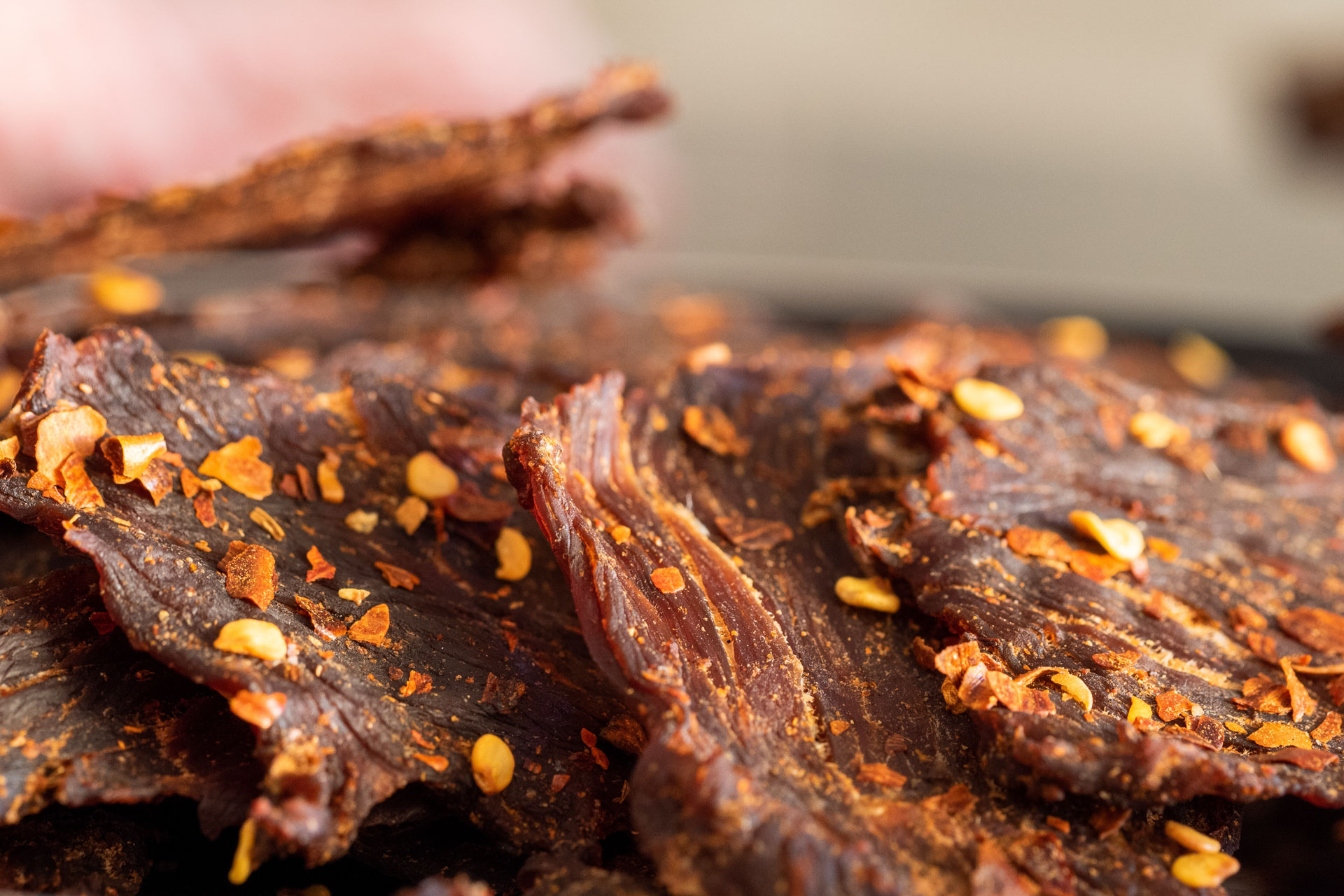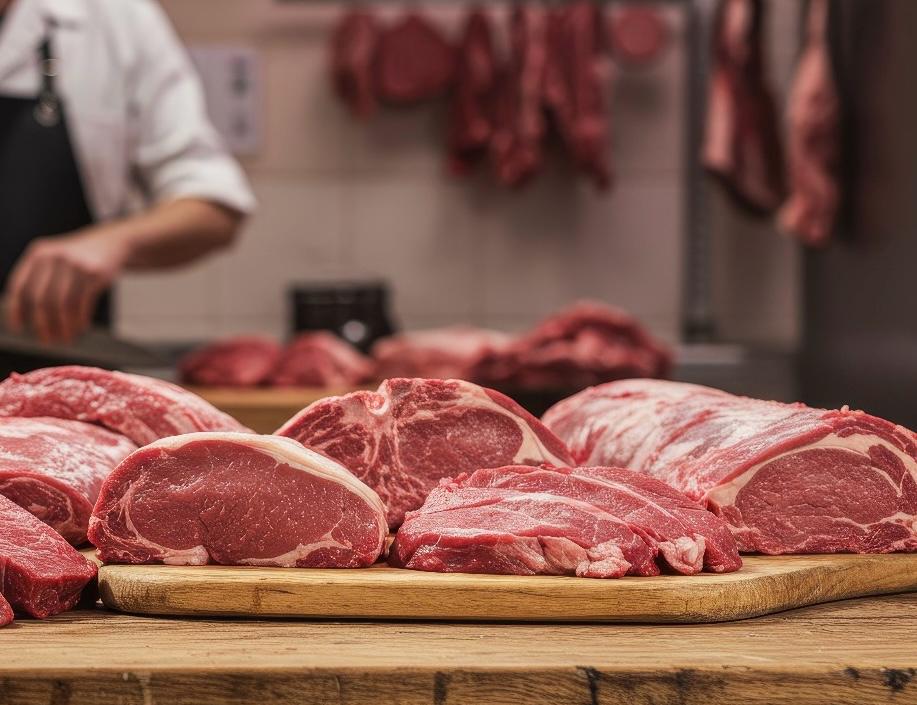Biltong Vs. Jerky: Understanding The Differences
For meat lovers worldwide, dried meat snacks represent the perfect combination of protein, convenience, and flavor. However, not all dried meats are created equal. When comparing biltong vs. jerky, many people mistakenly assume they are simply regional variations of the same product. This obscures the rich cultural heritage and distinctive production methods that set these two delicacies apart.
We have dedicated decades to perfecting the art of authentic South African meat preservation. Our passion lies in educating enthusiasts about the true difference between biltong and jerky, ensuring these culinary traditions are appreciated for their unique qualities. Whether you are a dried meat connoisseur or simply curious about these protein-packed snacks, understanding their distinct characteristics will enhance your appreciation of both.
Biltong Origin
The history of biltong can be traced back to the indigenous Khoisan Bushmen, who pioneered meat preservation techniques in Africa centuries ago. Without access to modern refrigeration, these innovative hunter-gatherers harnessed the arid African environment to naturally dehydrate strips of wild game, creating a sustainable protein source that would remain edible through changing seasons.
As European settlement expanded across South Africa in the 17th and 18th centuries, Boer Afrikaners of Dutch, German, and French descent enhanced these preservation methods. Their significant contribution came through introducing vinegar in the curing process along with distinctive spice blends. This refinement transformed the simple dried meat into the nuanced culinary speciality recognized today.
Is Biltong The Same As Jerky?
When people ask, “Is biltong the same as jerky?” our answer is a definitive no. While both are preserved meat products, the difference between biltong and jerky extends across preparation methods, ingredients, texture, flavor, and cultural significance.
Production Method: Heat Vs. Air
The most significant difference lies in the drying process:
- Jerky: Cooked at low temperatures for relatively short periods. This cooking process kills bacteria but also fundamentally changes the meat’s structure.
- Biltong: Air-dried at room temperature for extended periods. This slow drying preserves more of the meat’s natural properties and allows for complex flavor development.
This fundamental difference means that jerky is technically cooked meat, while biltong is cured and dried but never exposed to cooking temperatures.
Curing Ingredients: Vinegar Vs. Smoke
Another key aspect of biltong vs. jerky is the preservation approach:
- Jerky: Typically preserved using salt, sugar, and smoke. Modern commercial jerky often contains preservatives, liquid smoke, and numerous additives.
- Biltong: Traditionally cured with vinegar, salt, coriander, and black pepper. The vinegar creates an acidic environment hostile to bacteria, while also tenderizing the meat.
The vinegar bath is a defining characteristic of authentic biltong, contributing significantly to its distinctive flavor profile and ensuring proper preservation without requiring heat treatment.
Thickness & Texture
When examining beef biltong vs. jerky, the physical characteristics reveal striking differences:
- Jerky: Cut into thin strips before drying, resulting in a consistently chewy, somewhat tough texture throughout.
- Biltong: Cut into fresh meat slabs 12 – 20 inches in length and 0.6 – 1.2 inches in thickness. The most important factor is the biltong slabs must never be thicker than 1.2 inches – the reason for this is the air will not penetrate which will cause rotting and mold. Properly made biltong has a dry exterior with varying internal moisture depending on preference, from moist and tender to completely dry.
This textural diversity is one reason many connoisseurs prefer biltong, as it offers a more complex eating experience that can be customised to personal preference by adjusting the drying time.
Flavor Profile: Complexity Vs. Intensity
The taste difference between these two dried meat favourites is pronounced:
- Jerky: Often characterised by bold, intense flavors, frequently smoky, sweet, or heavily spiced. The cooking process caramelizes sugars and alters flavor compounds.
- Biltong: Features more subtle, meat-forward flavors with earthy notes from coriander and gentle acidity from vinegar. The natural umami of the meat remains prominent without competing flavors.
While jerky tends toward aggressive flavoring, biltong showcases the natural qualities of good meat, enhanced rather than overshadowed by its seasoning.
Is Biltong Healthier Than Jerky?
For the health-conscious consumer wondering is biltong healthier than jerky, the answer requires examining several nutritional aspects:
Ingredient Purity
Traditional biltong typically contains fewer additives than commercial jerky. The ingredient list for authentic biltong is remarkably short: meat, vinegar, salt, and spices. In contrast, many commercial jerky products contain preservatives, MSG, nitrates, liquid smoke, and sugar.
Nutritional Profile
From a macronutrient perspective:
- Biltong: Generally higher in protein content by weight with minimal carbohydrates.
- Jerky: Typically contains protein with higher carbohydrate content due to added sugars.
Processing Implications
The heat used in jerky production can reduce certain nutritional values, while the cold curing of biltong better preserves the meat’s natural nutrients. Additionally, the vinegar used in biltong has potential health benefits, including improved digestion and antimicrobial properties.
For those following specialized diets, biltong often makes an excellent choice as it:
- Aligns well with low-carb, keto, and paleo diets
- Contains no added sugars in traditional recipes
- Provides complete protein with all essential amino acids
- Is naturally gluten-free (Though check for cross-contamination)
Regional Variations
While discussing biltong vs. jerky, it is worth noting that these are not the only dried meat traditions globally. Many cultures have developed unique approaches to meat preservation:
South African Variations
Even within South Africa, you will find regional differences:
- Stokkies/Snap Sticks: Thinner biltong sticks that snap rather than bend
- Droëwors: Dried sausage made using biltong spices and techniques
- Moist Biltong: More popular in coastal regions and with Biltong connoisseurs
- Chili Biltong: Common in areas influenced by Portuguese settlers, and gaining popularity rapidly
Jerky Variations
American jerky itself has numerous regional styles:
- Western-style: Traditional, often made from wild game
- Teriyaki: Popular on the Pacific coast with Asian influences
- Peppered: Common in Texas and southern states
- Kippered Beef: Softer, moister Eastern variant
Global Dried Meats
Beyond biltong jerky South Africa and America, many cultures have their own dried meat traditions:
- Charqui: South American dried meat, predecessor to jerky
- Kilishi: Nigerian spiced and sun-dried beef
- Bakkwa: Chinese sweet-spiced dried pork
- Pemmican: Indigenous North American preserved meat and fat mixture
Each tradition reflects the climate, available ingredients, and cultural needs of its region, creating a fascinating global tapestry of preserved meat techniques.
Creating Your Own: Biltong Vs. Jerky At Home
For those inspired to try making these dried delicacies at home, understanding the different approaches is essential:
Making Biltong
- Cut beef (Preferably silverside or topside) into 0.6 – 1.2 inches thick strips along the grain
- Light spray or soak in vinegar
- Coat with a mixture of salt, coriander, black pepper, and other spices
- Hang in your biltong chamber and make sure the airflow is good
- Try to keep the temperature stabilized between 68-86°F
Making Jerky
- Slice beef very thinly (0.20 inches) against the grain
- Marinate in a mixture that typically includes soy sauce, Worcestershire sauce, honey, and salt, in the fridge for 12 hours or overnight
- Drain and then discard the marinade
- Arrange on trays in a dehydrator
- Dry at 167°F for 6 hours, or until done
- Cool completely before storing
The equipment needed differs significantly. Biltong requires a well-ventilated drying area or purpose-built biltong box with hooks, while jerky works best with a food dehydrator or oven with good temperature control.
Commercial Considerations
The market positioning of biltong vs. jerky reveals interesting cultural and commercial differences:
- Global Reach: Jerky has achieved widespread international distribution, while biltong remains strongest in South Africa and countries with South African diaspora communities.
- Pricing Structure: Biltong typically commands premium prices outside South Africa due to its artisanal nature and limited production.
- Marketing Approach: Jerky is often marketed as a convenient protein snack or energy food, while biltong tends to be positioned as a gourmet or heritage product.
- Innovation Cycles: The jerky market sees rapid flavor innovation and product development, while biltong maintains stronger ties to traditional preparation methods.
For those outside South Africa seeking authentic biltong, specialty producers like ourselves pride themselves on maintaining traditional methods while meeting modern food safety standards.
Experiencing Both
Rather than viewing the question as biltong or jerky – Which is better? We encourage meat enthusiasts to appreciate both traditions for their unique qualities. Each represents the ingenuity of human food preservation and the cultural heritage of its region.
South African beef jerky, a term sometimes mistakenly applied to biltong, does not technically exist as traditionally defined. Authentic South African dried beef is biltong, with its own distinct preparation methods and cultural significance.
For those new to biltong, we recommend starting with a medium-moisture variety to experience the textural complexity that makes it special. Pair it with a robust red wine or craft beer to appreciate the full flavor profile. Committed jerky fans might be surprised by biltong’s subtle complexity and varied textures.
Conclusion
The difference between biltong and jerky extends far beyond simple variation. These are two distinct culinary traditions born of different cultures, climates, and preservation needs. By understanding their unique characteristics, we gain appreciation for the ingenuity and craft behind these enduring food traditions.
Whether you prefer the subtle, complex flavors of traditional biltong or the bold intensity of American jerky, both deserve recognition as masterful approaches to meat preservation. Rather than asking which is superior, perhaps we should celebrate that humanity has developed such diverse and delicious ways to preserve and enjoy meat across different continents and cultures.






